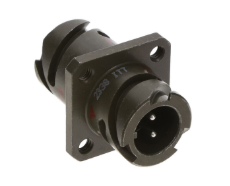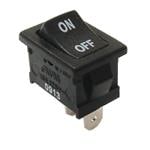Understanding the authority gap
Workplace bias is rarely overt and oftentimes it will be an unconscious action, yet its effects are significant. Women in professional environments commonly find their expertise questioned, their authority challenged, and their contributions overlooked. This is not because women lack competence but rather, there are ingrained perceptions about who we see as credible and influential.
Mary Ann Sieghart, journalist and author of ‘The Authority Gap’, has spent years researching this phenomenon. Her definition of the authority gap is “a measure of how much more seriously we take men than women”, regardless of qualifications or expertise – and it is persistent. Through her work, Sieghart shows how this bias manifests in daily interactions, promotions, and leadership opportunities.
On 3rd March Sieghart spoke to Maricel Dicion, Managing Director at Women of Influence+ during a webinar to discuss the authority gap, a term coined by Sieghart.
What the authority gap looks like
The authority gap presents itself in many ways, from interruptions in meetings to discrepancies in promotions. During the webinar, Sieghart shares a personal example of attending a conference where, after being asked what she did, she listed her professional achievements, whereby a man responded by calling her a “busy little girl.” She was around 50 years old at the time, and it is moments like this that encapsulate the problem: women, no matter how experienced, are undermined, not taken seriously, and in this case ‘infantilised’.
What does the authority gap look like in practice? Sieghart shares: “We assume a man knows what he's talking about, until he proves otherwise, whereas for a woman, it's all too often the other way around, and women are twice as likely as men to say they have to provide evidence of their competence, or that people are often surprised at their abilities, and women of colour are twice as likely as white people to say these things. So basically, the further you are from the white male middle class default, the wider the authority gap becomes.”
Even at the highest levels, this bias persists. “There was a fascinating study done of US supreme court proceedings, and you don't get much more authoritative than being a US Supreme Court justice. And what the researchers found was that the female justices were interrupted three times more than the male ones, 96% of the time, by men.
“So even being Ruth Bader Ginsburg doesn’t insulate you from the authority gap,” Sieghart quipped. So, if that is the case, then how can everyday professional women expect better treatment?
Sieghart shares that because the authority gap can be unconscious, one of the ways you can spread awareness about it is by calling it out in a non-confrontational way. For example, say: “‘Oh, I think that was a bit of an authority gap moment’.” She shares that it’s a useful phrase to use, “because you're talking about the moment rather than the perpetrator. So it doesn't become too personal. It's quite neutral. It's not very charged. And then it enables people to discuss the moment.”
Confidence versus competence
One of the reasons the authority gap persists is the confusion between confidence and competence. Studies show that men are often promoted based on their perceived potential, while women must prove their capabilities multiple times before being considered for the same roles.
A study of Walmart’s performance evaluations and promotions over many years found that women actually received slightly higher performance evaluations than men. However, they were still 14% less likely to be promoted. This is because promotion decisions often favour candidates who exhibit confidence – an attribute encouraged in men but discouraged in women. Sieghart said: “We see this in corporate America, and McKinsey, and Lean In do an annual ‘Women at Work’ survey, and they find that even on the very first rung of the managerial ladder, 100 men are promoted for every 81 women, and that figure of 81 has actually gone down over the last year. So women are entering the workforce with better educational qualifications on average than men, but they're not being promoted, and that's because of the authority gap, because they're just not perceived as competent as men are.”
According to Sieghart, Thomas Chamorro-Premuzic, author of ‘Why Do So Many Incompetent Men Become Leaders?’, argues that the traits that get people promoted – overconfidence, self-promotion, and assertiveness – are often the very traits that make bad leaders. The best leaders listen, delegate, and take constructive feedback – qualities often found in women but not as highly valued in traditional hiring processes.
This is a sentiment that Dr Andrea Cullen, CEO and Co-Founder of CAPSLOCK shares: “After 30 years in the tech sector, I’ve seen progress in breaking barriers, but challenges remain … Confidence, not ability, remains one of the biggest barriers, with women often feeling unheard and undervalued. I’ve seen how men of all ages often push themselves forward while equally capable women hesitate. This isn’t about skill, it’s about how the industry perceives and supports women in tech. Without strong female role models at every level, breaking into and advancing in the field remains difficult.”
How do transgender people experience the authority gap?
“If you are a woman up against a man for a promotion or for a job, and he gets it and you don't, you might suspect that bias was at play, or the authority gap played a part, but it's terribly hard to prove because you're different people, and he might genuinely be better and more deserving of that job than you, but if you talk to somebody who has lived as both a man and a woman, then you're talking to the same person, and they've got the same ability, intelligence, character, experience, and if they are treated quite differently after they transition, that must be because of their gender. A scientist would say, you've controlled for all the other variables and you've isolated the only one that matters, which is whether they are seen as male or female.”
One of the most revealing pieces of evidence Sieghart shares in her book about the authority gap comes from people who have lived as both men and women and as such, their insights into how gender influences perceptions of authority are very telling.
Neuroscientist Ben Barres transitioned from female to male during his career and he noted that once he transitioned to a man his work was taken more seriously, despite his abilities remaining the same, to the point that, “an academic who didn't know his history was overheard after one of his seminars saying, ‘Oh, Ben Barre's gave a great seminar today, but then his works much better than his sisters, i.e., his own [work].”
Conversely, evolutionary biologist Joan Roughgarden found that, after transitioning to female, her previously smooth career path and promotion trajectory became riddled with resistance. She was talked over in meetings, her ideas were dismissed until repeated by men, and she was subjected to personal attacks that had never occurred when she was perceived as male. At first she “was amused [and] thought, ‘if I'm going to live as a woman, I'm damn well going to be discriminated against like a woman’. And then she said, ‘Well, the thrill of that has worn off, I can tell you’.” Roughgarden concluded, much like Sieghart, that “men are assumed to be competent until they prove otherwise. Women are assumed to be incompetent until they prove otherwise.”
These are just two cases of numerous studies which highlight how authority is often granted based on gender rather than merit.
What can be done?
Many organisations are making efforts to promote diversity, equity, and inclusion (DEI), but Sieghart stresses that representation alone is not enough. If women continue to be interrupted, undermined, and overlooked, hiring more of them into leadership will not solve the problem.
One effective strategy is addressing unconscious bias at its root. Businesses can take simple but impactful steps to tackle the authority gap:
- Re-evaluate leadership selection criteria: ensure that confidence is not mistaken for competence in hiring and promotions
- Change workplace culture: encourage employees to call out authority gap moments in a neutral way, such as saying, “That felt like an authority gap moment,” rather than blaming individuals
- Introduce ‘micro-boosts’ for women: men receive more informal opportunities for mentorship, high-profile projects, and visibility. Companies should consciously distribute these opportunities more equitably
- Engage men in the conversation: businesses that involve men in gender equality initiatives see progress 96% of the time, compared to only 30% in those that don’t
A better workplace for all
Addressing the authority gap is not just about fairness – it is about business success, and research has shown time and again that organisations with more gender-equal workplaces see improved performance, higher employee satisfaction, and lower turnover rates. Sieghart notes that gender-equal relationships also lead to better personal outcomes – so it really is a universal win.
As Sieghart emphasises, fixing the authority gap is not about “fixing women.” It is about fixing workplace culture so that competence is recognised and rewarded equally. If businesses take these steps, workplaces will become more effective, inclusive, and successful for everyone.







